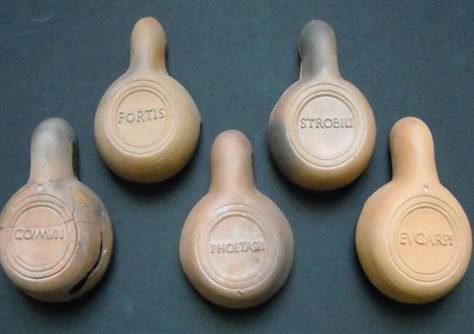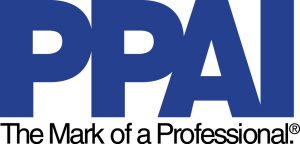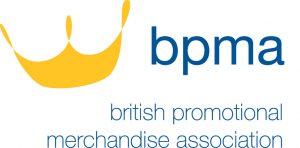The history of promotional products (keychains, luggage tags, fridge magnets, coasters, zipper pulls and patches) began many many years ago.
Using “gifts” as a way to promote a message, personality or a business is not an invention of the “Modern World”.
It has become quite normal to receive additional things from sellers, after or even before purchasing a product or service. (stickers, bags in a supermarket).
These gifts, are quite effective for creating a bond between sellers and customers.
They are made with many purposes, not only for gaining your loyalty (as a customer) but also for spreading the company’s message and to make people talk about an specific brand.

How it all began…
The first record of products used as part of a promotion in the US, was in the XVIII century as a part of a political campaign.
Nevertheless, products used as a way of branding, has it’s roots in the ancient world and it seams to be, moreover, a part of a natural human behavior, commonly found in many other cultures.
Branding in the B.C.
We could say that the idea of promotional products came from the mixture of two other great marketing ideas that already existed and were used worldwide.
![The "Secret" History of Promotional Products 2 Remaining city of Mohenjo Daro Source: Nawabtanweer [CC BY-SA]](https://www.pvcemblems.com/dev/wp-content/uploads/2022/06/512px-Remaining_city_of_Mohenjo_Daro.jpg)
The main idea is about giving away additional things after purchasing, like a candy or a tip, which is a common behavior found in many cultures around the world, is the “adehala” that the spaniards learnt from the arabs, it is also the “ñapa” or “yapa” that hispanic conquerors inherited from the Aymaras in South America.
What qualifies the gift as a “promotional product” is the seal, sign, symbol or signature, that identifies the giver, which is the key for making other people talk about the person or organization behind that product or service.
Special signs, symbols and seals were used since the begining of times to identify a family, a realm or kingdom.
In The Birth of Brand: 4000 Years of Branding History Karl Moore and Susan Raid state that “brands are as old as civilization” giving a large amount of historical evidence to support this idea.
Thus, researchers have realized that, more than 2,000 years B.C., “hundreds of square seals with animal figures” were used as trademarks.
These seals were found in many parts of the globe, mainly in the Indus Valley at Mohenjo-daro, Harappa, and Lothal.
But the same seal have been found also in Sumer, Mesopotamia, Failaka, in the core of the Persian Gulf identifying products such as “jars, baskets and other containers”. All the evidence finally unveils a huge network of international market in the very beginnings of human history.
Branding in the Ancient Rome
Another great example of identifying products for commerce or exchange of goods is found during the Roman Empire, as shown in the following picture.

The artisans who made the pottery used to identify their products with their name.
Fortis, Comun, Strobili, Phoetases, EvCarpi are some of the brands the Italian researchers found at the bottom of jars, lamps, bowls, flower pots, bottles and other types of containers made out of clay.
Promotional ITEMS in USA in the XVIII Century
A button to support President George Washington is commonly referred to as the first promotional product of human history.
Thousands of them were given away as a part of an innovative campaign for the first election in the history of our country, the year 1789.

The button design had the following message: “Long Live the President GW“.
The successful strategy helped George Washington win the presidency and started a new smart way for promoting products that eventually would become in a millionaire business.
The Boom of custom Promotional PRODUCTS in the US
About a decade after that first button, an ingenious entrepreneur called Jasper Freemont Meek proposed the owner of a shoe store to giveaway book bags to the students with a simple message “Buy Cantwell Shoes” so the children would spread the advertisement all around the town.
Although, other kind of products such as calendars and almanacs were already becoming popular, this clever idea turned out so successful that Meek quickly transformed his press business in to a Marketing Agency with the name of “Tuscarora Advertising Co” which operated almost a century without any other company competing against them, therefore their results were outstanding.
It wasn’t until the beginning of the XX century that this industry was consolidated and the Promotional Products Association International (PPAI) was founded in 1904.

The Boom of Unique Promotional Products in the UK
50 years later, in England, after World War II, the awesome idea of using branded products to promote companies started to grow-up. The British Promotional Merchandise Association (BPMA) was created the year 1965.
According to the Branding Magazine “By the 1970s, there was a real explosion of the use of promotional merchandise” in England.

BRAND Promotional Products in the Digital Era
In the XXI century promotional items have survived the internet, and the “Digital Marketing Era”, but why is that?
Nowadays, companies use digital products or giveaways such as PDF’s, E-books, etc, to attract customers and to drive traffic to certain websites (Inbound Marketing), and while the medium is different than Jasper Meet’ school bags, the purpose remain the same: bringing customers to a company’s location (offline or online).

Physical promotional products, like t-shirts, caps, pens, cups, keychains etc, work because of the popularity of said products and the thousands of impressions they produce during their lifetime.
Even though we are fully immersed in the digital world of smart phones and the endless streaming of videos, nothing beats the satisfaction of experiencing real life items, things we can see, touch and smell.
As long as we exist in this world, physical promotional items will continue building brand awareness, creating loyalty and advocacy.
There you have it! More than 2,000 years in the history of promotional products being used by companies of all shapes and sizes to help them grow and successfully achieve their goals.
Sources
- https://www.navitor.com/blog/brief-history-promotional-products/
- https://en.wikipedia.org/wiki/Promotional_merchandise
- https://www.brandingmag.com
- http://www.mundopersonalizado.es/2015/09/07/como-inventaron-productos-promocionales/
